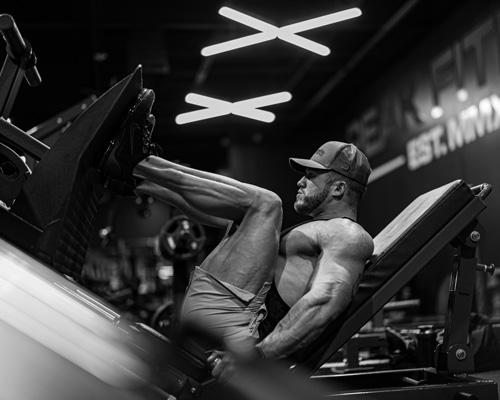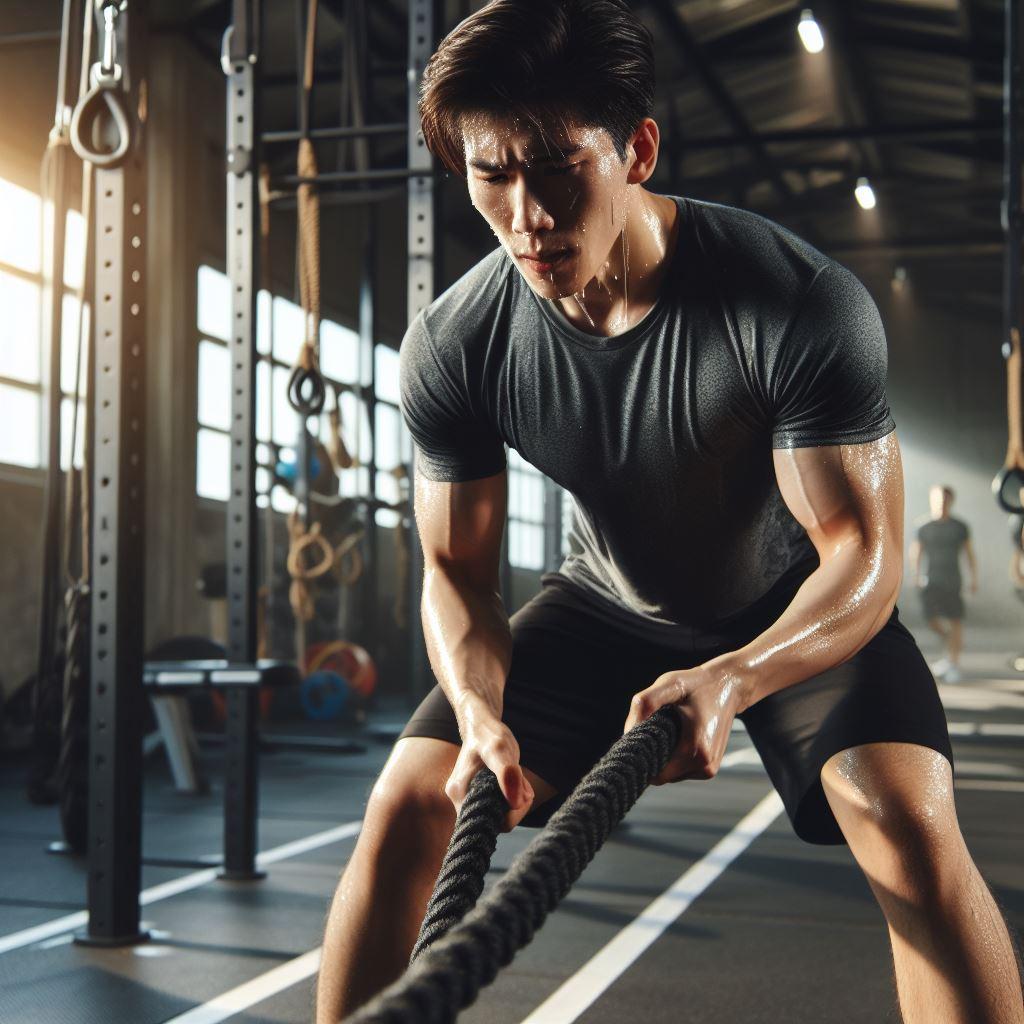The leg press exercise is a popular strength training exercise that primarily targets the lower body. It’s a machine and consists of a platform you push away from your body using the legs, against a resistance force. The main purpose of the leg press is to stimulate a squat-like exercise with unique benefits.
The leg press exercise primarily targets the quads, it also targets the hamstrings and the glutes as secondary contributors. Depending on the foot placement and the angle of the machine, you can shift the focus to other muscles in your legs.
Using the leg press machine with proper form and correct settings ensures you get the most out of your workout and avoid injuries. Common mistakes can put you at risk of injury and reduce the effectiveness of the exercise.
Who Can Do Leg Press Exercises?
The leg press is awesome for almost everyone! It’s a great way to build strong, awesome legs. Leg press is also a great choice if your knees or back feel sore from other exercises because it removes the stability part and can be gentler on your body. Plus it’s easy to learn, making it a perfect exercise for beginners starting their fitness journey. Leg press helps you build the foundations to master the squat faster than ever.
The Types of Leg Press Machines
Leg press machines come in different types:
- Standard Leg Press: The classic leg press. It’s a great all-around machine for building strong quads.
- 45-degree Incline Leg Press: This machine has you seated at a 45-degree angle, emphasizing your glutes, hamstrings, and quads.
- Vertical Leg Press: This machine lets you lie flat on your back and push a loaded platform straight up. This machine is great for isolating your quads.
- Iso-Lateral Leg Press: This machine has two platforms you push with each leg independently. It’s great for improving balance and isolating your legs.
- Seated Horizontal Leg Press: This machine allows you to sit facing the platform and push it forward. It’s a great option for targeting your quads and can be easier on your back compared to the standard leg press.
Each leg press machine has its benefits and can help you target different muscles in your lower body, it’s best to try them all out and see which one feels best for you.
Leg Press Benefits
-
Lower Body Isolation and Development: The leg press isolates your quads, hamstring, and glutes, unlike squats or deadlifts that engage the core and other unwanted muscles. This lets you focus on your leg muscles for maximum growth and strength.
-
Low Requirement for Balance and Stabilization: Unlike squats or lunges, the leg press machine minimizes the need for balance and stabilization and lets you focus all your efforts on pushing the weight with your legs.
-
Excellent for Beginners: Mastering squats can be hard, but learning to leg press properly is easy, and its stable design minimizes injury risk.
-
Adjustable for Everyone: With the leg press machine, you can adjust the weight, chair position, and even foot placement to target specific muscles or difficulty levels.
-
Level Up Your Lifts: Targets the same muscles as squats and deadlifts, making you stronger for those exercises.
-
Push Your Limits Safely: The stable environment lets you safely overload your legs; the key to muscle growth and stronger legs.
-
Can be Used Anywhere: The leg press exercise fits anywhere in your workout - warmup, main exercise, or finisher.
-
Great for Injury Rehab and Prevention: The stable design and controlled movement are perfect for injury rehab, strengthening leg muscles while minimizing joint stress.
Proper Leg Press Technique
Setting Up The Leg Press Machine
before you begin using a leg press machine, it’s important to make sure it’s adjusted properly and that you’re using it safely. Here are the steps to follow when setting up a leg press machine:
Adjusting the Leg Press Machine
- Adjust the Seat: Ensure the seat is comfortable and at the appropriate height.
- Adjust the Backrest: Set the backrest to support your lower back and be at a slight angle, leaning slightly towards the footplate.
- Adjust the Footplate: Ensure the footplate is at a comfortable distance from your body, allowing your knees to bend properly without being pushed too far forward.
- Leg Press Foot Placement: Determine your foot positioning based on your goals. More on this later.
Safety Features of the Leg Press
- Safety Locks: Prevent the weight from falling on you if you’re unable to lift it.
- Range of Motion: Many machines are adjustable to account for the range of motion to prevent injury.
- Use a Spotter: Especially when going heavy and testing limits.
Performing the Exercise - Step By Step Guide
- Load Weight: Begin by loading the appropriate weight into the leg press machine.
- Positioning: Sit on the machine ensuring your back and head are firmly against the support.
- Foot Placement: Position your feet on the platform according to your preference, and ensure they are stable and comfortable.
- Body Alignment: Ensure your buttocks are flat against the seat and your knees are approximately a 90-degree angle.
- Handle Grip: Hold the assist handles provided on the side of the machine.
- Release Safety: Release the safety mechanism before starting the exercise.
- Engage Core: Brace your abdominal muscles to stabilize your core.
- Push Movement: Push the platform away by extending your legs with your heels and forefoot, keeping your heels flat on the platform.
- Controlled Extension: Extend your legs fully, maintaining control over the movement. Keep your head and back against the seat throughout the movement.
- Return Movement: Gradually bend your knees and return the platform back to the starting position.
Common Leg Press Mistakes to Avoid
- Too Much Weight: Only lift what you can handle with good form.
- Buttocks Off Seat: Keep your butt flat against the seat.
- Hands-on Knees: Hold the assist handles instead.
- Short Range of Motion: Move through the full range without lifting your hips.
- Head Position: Keep your head steady against the seatback.
- Breathing: Exhale while pushing, inhale while returning.
Leg Press Foot Variations
Foot placement is the secret code on the leg press machine, allowing you to stimulate different leg muscles!
- Target Different Muscles: Standard stance hits your quads, but go wide for inner thighs or narrow for outer quads. High foot placement blasts the glutes and hamstrings, while low targets the quads deeper.
- Change the Difficulty: Experiment! A wider stance might ease your knees, while narrow placement intensifies the burn. Do what works for your body.
- Optimize Range of Motion: High foot placement limits knee extension for glutes, while low stance allows for deeper quad engagement.
- Comfort and Safety First: Find your sweet spot. Experiment to find a food position that feels comfortable and minimizes injury risk.
Variations:
- Standard (Shoulder-Width): This is the usual way to place your feet. It’s great for building strong quads.
- Wide (1.5x - 2x Shoulder-Width): Inner thigh focus. Place your feet wider than your shoulders to target these muscles.
- Narrow (Feet Together or Inches Apart): To target the outer quads, put your feet close together.
- High Stance (Feet Near Top): Put your feet high up on the leg press platform. This will make your glutes and hamstrings work harder.
- Low Stance (Feet Near Bottom): Targets the quads more by placing your feet low on the leg press platform.
- Toes Only: You can isolate and strengthen your calves’ muscles by placing your toes on the leg press platform and performing calf raises.
Stay Tuned!
Adding Leg Press to Your Workout Routine
The leg press is a versatile exercise for your leg day routine. Let’s explore when and how to utilize it for optimal results.
workout structure
When to Place the Leg Press in Your Workout
The leg press can be used in various ways during a leg day workout:
- Warm-up: Warm up your legs with lighter weight and high reps (3 sets of 15 reps).
- Heavy Compound Lift: Build serious strength by using the leg press as your primary lower body exercise (4 sets of 6 reps with heavy weight).
- Support Movement: Following a heavier compound lift like squats, use the leg press to target specific muscle groups (3 sets of 10 reps with moderate weight for glutes with high foot placement).
- Burnout Exercise: Push your legs to the limit at the end of your workout with lighter weight and higher reps (3 sets of 12-15 reps to failure). You can also use advanced training protocols like rest-pause or drop sets to feel the burn even more!
Sets and Reps Tailored to You:
The ideal number of sets and reps depends on your goal:
- Hypertrophy: 3-5 sets of 8-12 reps with moderate weight.
- Strength: 3-6 sets of 5-8 reps with heavy weight.
Remember:
- Rest Periods: Allow sufficient rest between sets for muscle recovery and optimal performance.
- Progressive Overload: Gradually increase weight over time to challenge your muscles and promote growth.
Conclusion
The leg press is a machine-based exercise that targets your lower body muscles, particularly the quads, glutes, and hamstrings. It offers various benefits including lower body development, injury prevention, and ease of use for beginners.
This guide explored proper leg press technique, important safety tips, and foot placement variations to target different muscle groups. This leg press can be incorporated into your workout routine in various ways, from warm-ups to burnout sets.
In conclusion, consider incorporating leg press exercises with proper form into your workout routine to build strong legs. Remember to choose the appropriate weight, sets, and reps based on your goals.
For a complete leg workout routine, check out The Legs Workout You Will Feel Until Next Week!



